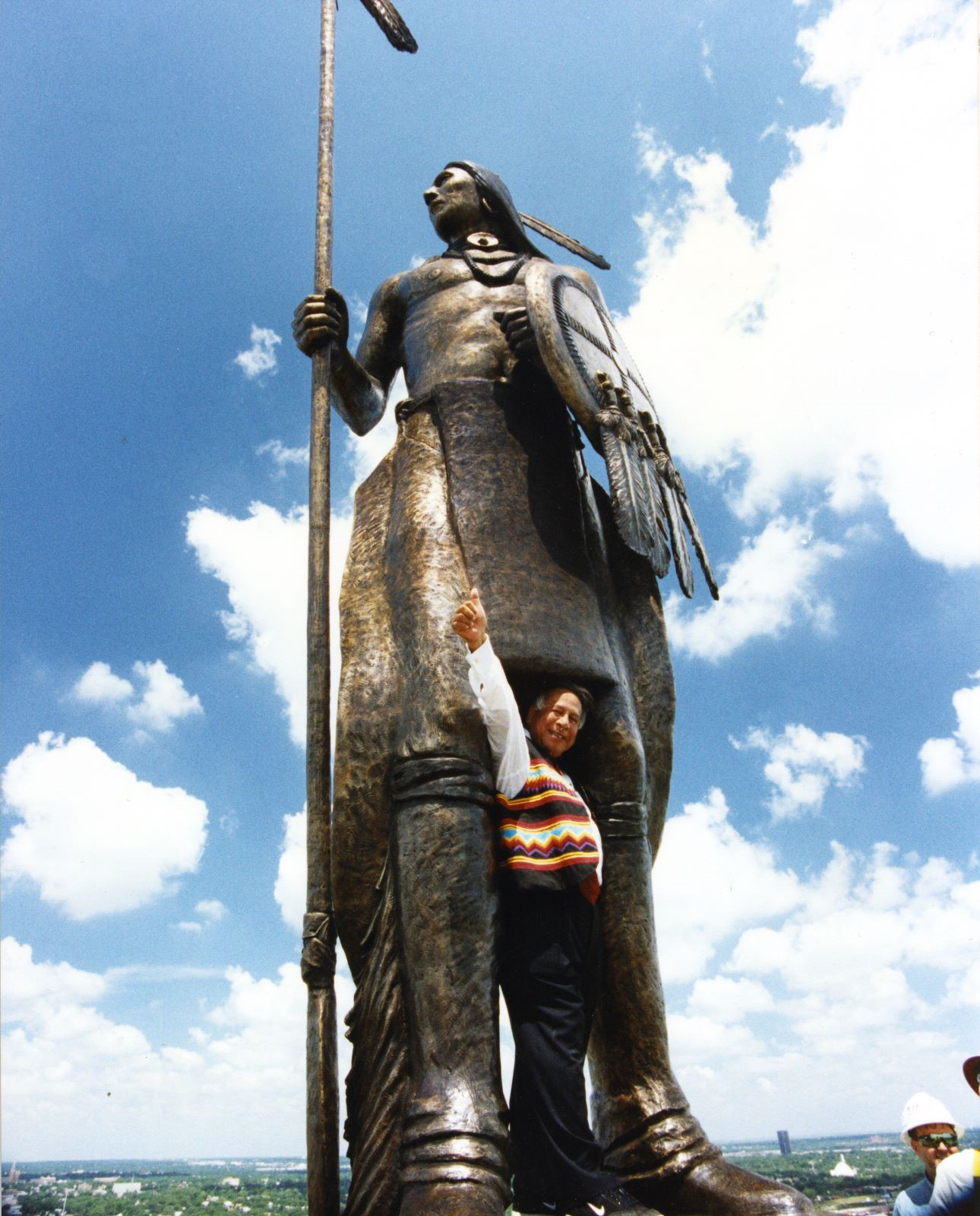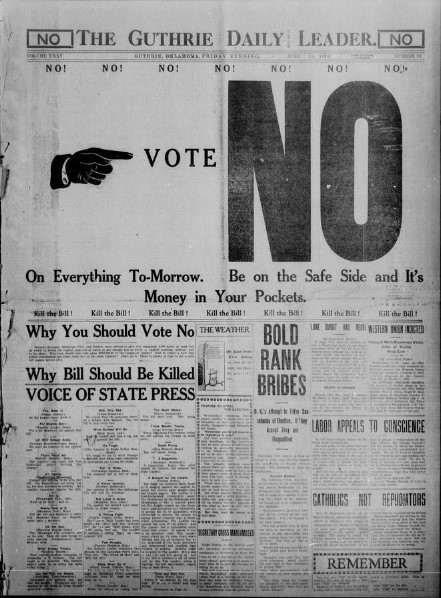
The Story of the Capitol
Activities
The Guardian Symbols
Symbols are objects that stand for something else such as the golden arches for McDonalds or the American flag for the United States. Symbols hold the same meaning as what they represent but convey that meaning more quickly. This use of symbols is also present in the Oklahoma State Capitol dome’s crowning element, The Guardian.
Read more about The Guardian in The Encyclopedia of Oklahoma History and Culture at www.okhistory.org/guardian.
Here is a picture of The Guardian. Using your knowledge on symbols and The Guardian, identify and describe the symbols on the statue.

Artist Enoch Kelly Haney and The Guardian (image courtesy of Enoch Kelly Haney).
Here is a video of the artist, Enoch Kelly Haney, being interviewed about his work. (1:28–2:57) www.youtube.com/watch?v=bylcZ-khPuw.
Persuasive Writing: What Town Should be the Capital of Oklahoma?
When you have a strong opinion about something, you have a bias. In the 1910s, Oklahomans were biased in favor of a particular location becoming the capital. Before the vote on June 10, 1910, to determine where the state capital should be, communities worked hard to promote their towns and to offer plenty of reasons why another town should not get it. They used persuasion to convince others.
For example, this Guthrie newspaper wanted the state capital to stay in Guthrie:

June 10, 1901, issue of the Guthrie Daily Leader
The Oklahoman shared their confident view that the vote would be in favor of moving to Oklahoma City:

June 10, 1901, issue of the Daily Oklahoman
Where would you place the capital of Oklahoma? Create a poster announcing your position. Try to convince the person reading your poster to share your view. Be as persuasive as possible.
Working with Data: Numbers and Spreadsheets
A primary source is a piece of information about a historical event or period created by an actual participant in or a firsthand witness to the event. Primary sources are the basic pieces of evidence that help a historian understand what happened in the past. These materials include letters, speeches, diaries or newspaper articles from the time. Sometimes, important primary sources may not be included because the historian has a limited view of what counts as evidence. Instructional manuals, text message conversation, and or even textiles like quilts can be primary sources. Increasingly, data recorded in spreadsheets are available to historians. Spreadsheets can often assist historians in understanding very specific questions.
Take a look at this spreadsheet for the Capitol Restoration project:
Financial Report (January 2020)
Answer these questions for the first tab “FY20 Cash Balance”
1. What time period does this document cover?
2. What do you think a “vendor” is?
3. What is a “deposit”?
4. How do the numbers in columns C and D change the cash balance? (You can change or delete the items in the spreadsheet to test the effect)
5. How do the numbers in column G change the cash balance?
6. Based on information, what do you conclude this part of the spreadsheet shows?
7. How could a historian telling the story of the Capitol restoration use this piece of evidence?
Research Strategies: Note Taking
Historians examine a large amount of information, and they only use part of the information they learn. One of the ways people highlight the important information they want to learn or use later is by taking notes on what they are examining. People record their information using a variety of methods, but the goals for all the methods is creating a shorter record that is well-organized so that the historian can refer back to the information without going over the original source again.
Pick one of the videos from the Oklahoma State Capitol Restoration YouTube playlist. Listen to the video. You can turn on the closed captions if that helps, or slow the speed down a little if the presenter in the video speaks too quickly. Write down the important information from the story the presenter is sharing. Then, take your notes and give it to another person. Their job is to tell the story again. They can say it or write a paragraph. Are you happy with how closely they matched the original? If you are, you are a good note-taker! You can practice with other videos if you are not happy with the first attempt.
You can find the Oklahoma Capitol Restoration Project YouTube playlist here:
youtube.com/playlist?list=PLorkiIqdWX3llCGAf97bSX3VaXxyg2XnV

